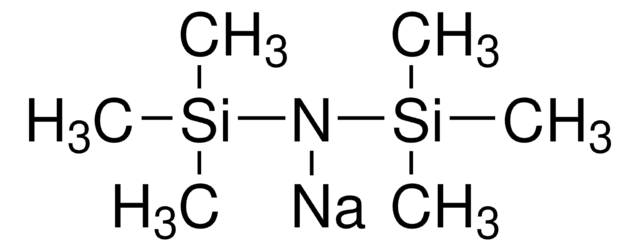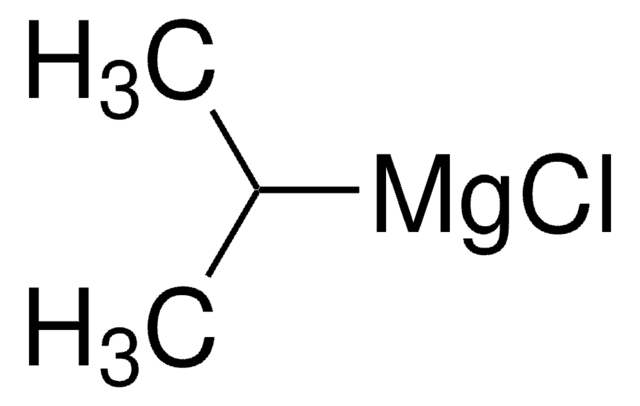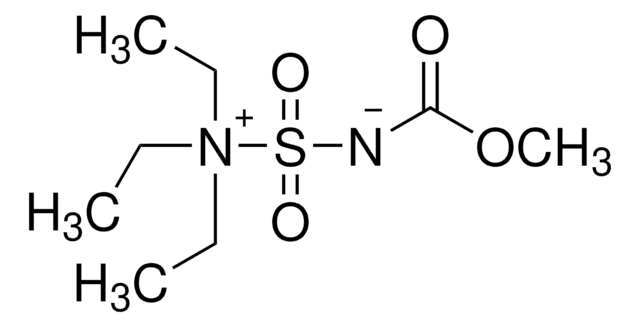Kluczowe dokumenty
766917
Lithium bis(trimethylsilyl)amide solution
1.5 M in THF
Synonim(y):
Hexamethyldisilazane lithium salt
About This Item
Polecane produkty
Formularz
liquid
stężenie
1.5 M in THF
gęstość
0.893 g/mL at 25 °C
ciąg SMILES
[Li]N([Si](C)(C)C)[Si](C)(C)C
InChI
1S/C6H18NSi2.Li/c1-8(2,3)7-9(4,5)6;/h1-6H3;/q-1;+1
Klucz InChI
YNESATAKKCNGOF-UHFFFAOYSA-N
Szukasz podobnych produktów? Odwiedź Przewodnik dotyczący porównywania produktów
Powiązane kategorie
Opis ogólny
Zastosowanie
- In the deprotonation and nucleophilic difluoromethylation reactions.
- 3-methoxy substituted dihydropyrrole derivatives by reacting with aldehydes and lithiated methoxyallene via in situ formations of N-trimethylsilylated imines.
- In Darzens condensation and directed aldol condensation reactions.
- To synthesize poly(N-octyl-p-benzamide)s by chain-growth polycondensation of 4-octylaminobenzoic acid methyl ester.
Hasło ostrzegawcze
Danger
Zwroty wskazujące rodzaj zagrożenia
Zwroty wskazujące środki ostrożności
Klasyfikacja zagrożeń
Carc. 2 - Eye Dam. 1 - Flam. Liq. 2 - Self-heat. 1 - Skin Corr. 1B - STOT SE 3
Organy docelowe
Central nervous system, Respiratory system
Zagrożenia dodatkowe
Kod klasy składowania
4.2 - Pyrophoric and self-heating hazardous materials
Klasa zagrożenia wodnego (WGK)
WGK 2
Temperatura zapłonu (°F)
31.3 °F - closed cup
Temperatura zapłonu (°C)
-0.4 °C - closed cup
Wybierz jedną z najnowszych wersji:
Masz już ten produkt?
Dokumenty związane z niedawno zakupionymi produktami zostały zamieszczone w Bibliotece dokumentów.
Klienci oglądali również te produkty
Nasz zespół naukowców ma doświadczenie we wszystkich obszarach badań, w tym w naukach przyrodniczych, materiałoznawstwie, syntezie chemicznej, chromatografii, analityce i wielu innych dziedzinach.
Skontaktuj się z zespołem ds. pomocy technicznej













